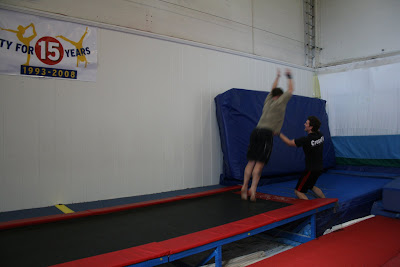
The psoas (soh-as, like the P in pneumonia) is a nasty little critter of a muscle. And as an aside, it is the fillet Mignon of the human body (helpful if you should crash your plane with your Crossfit team in the Andes.) The superior attachments of this thick bastard are along either side of your lumbar spine (with fibers potentially going even higher.) Then, the psoas crosses over the pelvic bowl and inserts on the inside of your femur. You could say the psoas is a two joint muscle but it ends up crossing upwards of at least eight functional anatomical segments. We tend to think of it as the powerful hip flexor it is, but this is a little simplistic. The psoas also acts to flex the trunk at the hips if the legs are planted as in a glute ham sit up. The psoas also acts to position the head of the femur in the acetabulum. All this AND this hard working "hip-flexor" stabilizes the spine (poorly) and helps keep us in a solid extended position (this last piece is a problem sometimes when we deadlift--over extension.).
So, you can imagine that a tight psoas can potentially cause quite a few problems. Imagine the crazy lumbar extension load that goes on in sprinting when a tight psoas gets super stretched when the hip is at full extension behind the athlete (stronger abs anyone?)
We hear about hard working athletes that get an achy low back after sleeping on their backs all night. Psoas anyone?
Needless to say, psoas warming up/stretching has been addressed by a million different people in a million different ways. When you perform the Sampson stretch as advocated by the "better Crossfit warmup" you are hitting the front or anterior hip capsule/structures and a bit of the psoas.
But, we want to advocate for a little bit more psoas focused/biased stretching
movement.
The set up will look the same for any kneeling hip opener, but the difference is the blocking of the upper back by a pole or door way.
So, take an extreme kneeling position in front of a pole or door way while thinking about maximally opening the hip of the trailing leg (that would be going through the doorway behind you.)

Normally we would tell our athletes to imagine tucking their pelvis under to facilitate the hip/psoas stretch.

Instead, think about pushing your upper back into the pole or door-jam as above. This will act to fulcrum your pelvis forward and simultaneously keep your back upright.
Practice your contract relax by imagining that you are driving your back knee forward.
Five seconds peak contraction, ten seconds of moving further into your new range.
Shoot for a long 90 second exposure.
Oh, and that horrible ripping sensation going on in your pelvis?
That's just you becoming better at everything.
Kstar

























